Moves Mean More Jobs Covering Race
Kelly to Lead L.A. Times’ D.C. Bureau
2 of Color Join Boston Globe Masthead
Radio Anchor Fired After Using ‘Colored’
Byron Allen Buys Honolulu ABC Affiliate
Staffers: Public Radio Panders to Whites
How Trump’s ‘African American’ Bolted
Muir Presses Harris on Debate Exchange
Toll on People of Color Is Actually Worse
Spanish Media Still Using ‘Illegal’
Ads With Diversity More Successful
Suffrage Push Wasn’t Just White Women
Short Takes
Homepage photo by Jon Austria, Naples (Fla.) Daily News
Support Journal-isms
Moves Mean More Jobs Covering Race
“Gannett, the owner of USA TODAY and more than 260 local news operations, announced a broad initiative Thursday to make its workforce as diverse as the country by 2025 and to expand the number of journalists focused on covering issues related to race and identity, social justice and equality,” Nathan Bomey reported for USA Today.
The bold initiative means jobs for journalists of color and those who wish to report on racial issues.
“More than a third of this investment will come from incremental hiring, and the rest will result from a reprioritization of existing reporting and editing resources.”
If Gannett makes its goal, it will accomplish what the industry has not. In 1978, the organization then known as the American Society of Newspaper Editors pledged to try to “achieve the minority percentage in newsrooms equal to the minority proportion of the total population before the year 2000.”
In 1999, when it was clear that the goal would not be met, the association reset the parity goal to 2025. That meant that “newspapers will need to increase their percentage of minorities in the newsroom by 229 percent,” ASNE said then.
ASNE, now the News Leaders Association, has no enforcement power over individual newsrooms, but Gannett Co. can enforce its goals within its company.
Bomey continued, “The overall company, which has a presence in 47 states, said women make up 46% of its workforce and Black, Indigenous and people of color (BIPOC) make up 22%. In Gannett’s news division, about 41% of its journalists are female and 18% are BIPOC. At USA TODAY, women make up 48% of the newsroom and BIPOC staff members make up a little over 30%.
“The company said its personnel would mirror the nation’s population of women and BIPOC by 2025. Gannett also plans to increase by 30% the share of BIPOC in leadership positions. . . .
“Gannett also disclosed demographic figures for the entire company,” Bomey added.
He also wrote, “As part of its announcement, the company said it’s adding or reassigning journalists to 60 newly created beats in a concerted effort to enhance coverage of topics such as criminal justice, educational inequity, the roots of racism, environmental justice, fairness in housing and employment, and LGBTQ issues.
“With its more than 260 daily publications and several hundred weeklies, Gannett is the largest media company by print audience and one of the largest by digital audience. Its outlets include the Arizona Republic, Detroit Free Press, Columbus Dispatch, Austin American-Statesman, Milwaukee Journal Sentinel, The Indianapolis Star and Louisville Courier Journal.
“ ‘I just don’t believe that we can do this important work to its fullest potential without the benefit of reflecting the communities we serve and the nation at large,’ Maribel Perez Wadsworth, Gannett’s president of news and publisher of USA TODAY (pictured above), said in an interview. ‘I always say to my team, “Diversity and inclusion are choices.” To me, this is going to be reflective of that.’ ”
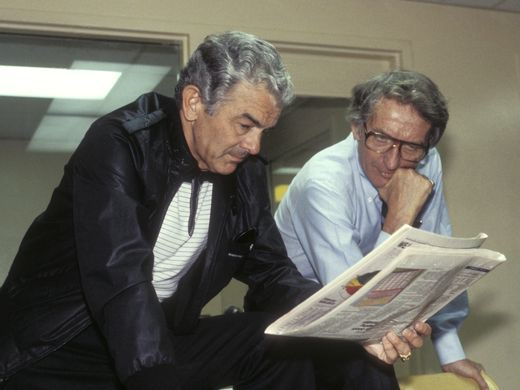 Under the late CEO Allen H. Neuharth (pictured, left) and top executives such as John Quinn (with Neuharth) , Gannett was known in the 1980s as an industry leader on diversity. Wadsworth, a Cuban American, is also considered a diversity champion. She was awarded the Robert G. McGruder Award for Diversity Leadership last year by the News Leaders Association.
Under the late CEO Allen H. Neuharth (pictured, left) and top executives such as John Quinn (with Neuharth) , Gannett was known in the 1980s as an industry leader on diversity. Wadsworth, a Cuban American, is also considered a diversity champion. She was awarded the Robert G. McGruder Award for Diversity Leadership last year by the News Leaders Association.
Wadsworth wrote in her own USA Today column Thursday, “Gannett is committed to creating a culture where every employee feels safe, included and championed for their full identity. This week, the company announced important steps to expand our demographic data to be more inclusive by providing employees the opportunity to be heard and voluntarily self-identify as diverse in ways beyond race and ethnicity, such as identifying as LGBTQ. . . .”
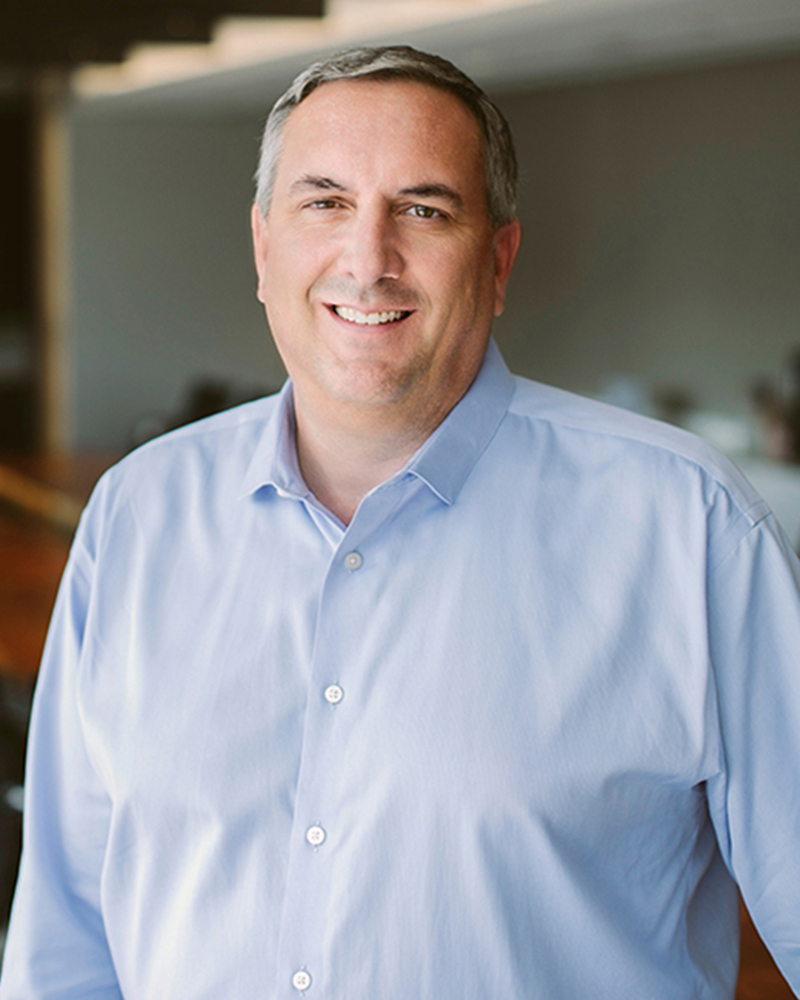 Gannett has also launched a Diversity Advisory Council, led by CEO Michael Reed (pictured above) and LaToya Johnson (pictured, below), director of inclusion, diversity and equity, to hold the organization accountable for its goals.
Gannett has also launched a Diversity Advisory Council, led by CEO Michael Reed (pictured above) and LaToya Johnson (pictured, below), director of inclusion, diversity and equity, to hold the organization accountable for its goals.
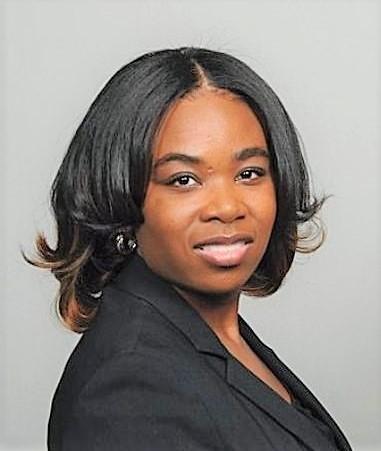 In addition, as Nieman Lab reported, “On Thursday morning, nearly every newsroom in the USA Today Network published some kind of demographic census that took stock of its newsroom’s current staff diversity online and in print.
In addition, as Nieman Lab reported, “On Thursday morning, nearly every newsroom in the USA Today Network published some kind of demographic census that took stock of its newsroom’s current staff diversity online and in print.
“This is the first time that USA Today and all local Gannett newsrooms have published a diversity census for their readers, alongside community demographic data. Across most of the newsrooms that released data, newsroom staffs and leadership were whiter than the communities in which they operate. The release of Gannett’s diversity data follows diversity reports from news outlets like The New York Times and The Washington Post. . . .”
- Peter Bhatia, Detroit Free Press: Diversity matters. And the Free Press itself must do better.
- Nicole Carroll, USA Today: The Backstory: USA TODAY must better reflect the US to tell the stories of our nation
- James N. Fitzhenry, Appleton (Wis.) Post-Crescent: This year, above all, requires us to make newsrooms more diverse, inclusive to better reflect our communities
- Paul Greeley, TVNewsCheck: Local TV Stations Push For Racial Equality
- Richard A. Green, Louisville (Ky.) Courier Journal: Courier Journal editor: Our community is changing. Our newsroom must change, too
- Daniel Kreps, Rolling Stone: Samantha Bee Examines Lack of Diversity in Journalism on ‘Full Frontal’
- Kathy Robideau, Minneapolis / St. Paul Business Journal: Publisher’s note: We’re listening, and taking action on diversity, inclusion
- Mark Russell, Memphis Commercial Appeal: From the Editor: Going on the record with The Commercial Appeal’s diversity pledge
- Andrew Ross Sorkin and Nikole Hannah-Jones, New York Times: Corporate America Agrees Black Lives Matter. What Comes Next?
- Ray Stern, Phoenix New Times: Arizona Republic Reporters Issue Diversity Demands on Progressives-Only Site (Aug. 18)
- Hollis Towns (Gannett): Hollis Towns Talks Diversity (video)
Kelly to Lead L.A. Times’ D.C. Bureau
Kimbriell Kelly (pictured) was named Washington bureau chief of the Los Angeles Times on Monday, further piercing the once white-male enclave of D.C. bureau chiefs and helping to redeem Executive Editor Norman Pearlstine’s pledge to speed up inclusion of journalists of color at all levels of the newsroom.
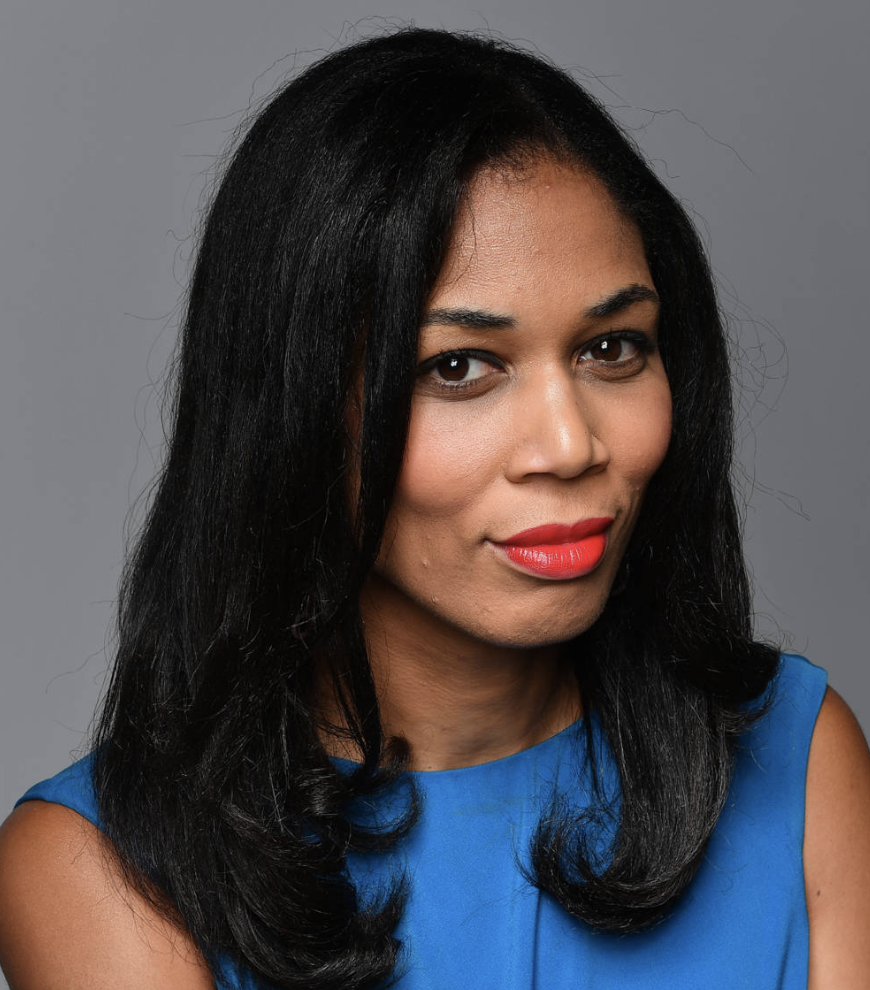 “Since joining The Times in Washington as deputy editor for enterprise and investigations, Kimbriell has edited the immigration coverage that led to the bureau’s first Pulitzer Prize in 17 years,” editors said in a staff notice. “She has served as a bridge builder, working closely with counterparts in Los Angeles. Recent stories that she produced, including those on vaping and Cal/OSHA, have resonated with readers who live in or care about California.”
“Since joining The Times in Washington as deputy editor for enterprise and investigations, Kimbriell has edited the immigration coverage that led to the bureau’s first Pulitzer Prize in 17 years,” editors said in a staff notice. “She has served as a bridge builder, working closely with counterparts in Los Angeles. Recent stories that she produced, including those on vaping and Cal/OSHA, have resonated with readers who live in or care about California.”
They also wrote, “Kimbriell joined the [Washington] Post as an investigative reporter in 2012 after working in and around Chicago for almost 15 years at the Daily Herald and the Chicago Reporter, where her investigation into Countrywide Financial’s subprime mortgage lending led to the nation’s largest fair-lending settlement. While at the Post, she worked on ‘Fatal Force,’ a team effort investigating officer-involved shootings that won a Pulitzer Prize for national reporting in 2016. Three years later, she was a Pulitzer finalist for a yearlong examination of murder in America’s 55 largest cities. . . .”
Jube Shiver Jr., who worked as a reporter in the bureau from September 1992 to February 2006, messaged Journal-isms, “Even at its height, the LA Washington bureau never had more than a handful of full-time black reporters. And for many years there seemed to be a two-man quota, first David Treadwell and Lee May, during the 1980s and then me and Sam Fulwood in the 1990s to the early aughts, although Marc Lacey of the New York Times was in the bureau [from 1994 to 1999] when Sam and I were there. . . .”
2 of Color Join Boston Globe Masthead
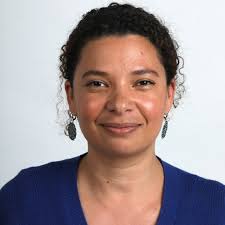 Boston Globe Editor Brian McGrory promoted Anica Butler (pictured) and Nestor Ramos to masthead positions at the newspaper, the first Black woman and the first Latino to be so elevated, Dan Kennedy reported Friday for his Boston media website.
Boston Globe Editor Brian McGrory promoted Anica Butler (pictured) and Nestor Ramos to masthead positions at the newspaper, the first Black woman and the first Latino to be so elevated, Dan Kennedy reported Friday for his Boston media website.
”In a memo to the staff, McGrory said that Ideas section editor Anica Butler has been named the deputy managing editor for local news, replacing Felice Belman, who recently departed for The New York Times. City editor Nestor Ramos (pictured below) will receive a new title — senior assistant managing editor for local news.
 “Both Butler’s and Ramos’ names will appear on the masthead, which represents a step forward for a paper seeking to become more diverse. . . .”
“Both Butler’s and Ramos’ names will appear on the masthead, which represents a step forward for a paper seeking to become more diverse. . . .”
Gregory L. Moore, a Black journalist, spent 16 years at the Globe, the last seven years and 10 months as managing editor. He left in 2002 to become editor of The Denver Post.
In the American Society of News Editors’ 2018 newsroom diversity survey, the Globe reported 17.54 percent people of color, with 14 Asian Americans, 15 Blacks, 11 Hispanics and 188 whites. [PDF]
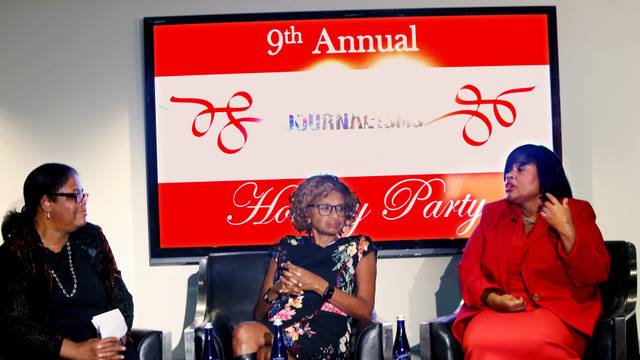
Radio Anchor Fired After Using ‘Colored’
A Cleveland radio anchor was fired Friday after he referred to Sen. Kamala Harris as the nation’s “first colored vice presidential candidate” in a news promo Wednesday night, Joey Morona reported Thursday, updated Friday for cleveland.com.
“ ‘We are aware of the reference made on WTAM by Kyle Cornell,’ Ray Davis, the station’s program and promotions director said in a statement. ‘We take this matter very seriously and addressed it immediately. The term used is extremely offensive and does not align with our station’s core values and commitment to the communities we serve. He is no longer with WTAM.’ ”
The incident follows one last month involving the word “Negro,” like “colored” once a common name for African Americans but which some now consider not only outdated, but offensive.
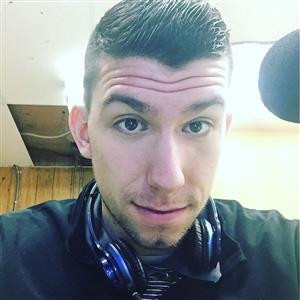 “In an interview with WKYC 3News, Cornell (pictured) said the comment ‘wasn’t meant to be malicious or in any sort of way trying to decimate the character of anyone, ‘ ” Morona continued.
“In an interview with WKYC 3News, Cornell (pictured) said the comment ‘wasn’t meant to be malicious or in any sort of way trying to decimate the character of anyone, ‘ ” Morona continued.
”The word was commonly used to refer to Black Americans through part of the 1960s, but for decades it has been considered offensive,” Aimee Ortiz and Marie Fazio wrote July 19 in The New York Times.
Morona wrote for cleveland.com, ” ‘Colored’ is an antiquated term that is considered offensive and derogatory because of its association with slavery and racist Jim Crow laws that were designed to keep Black people segregated and disenfranchised from white America. In its stylebook, the Associated Press says the word is permissible ‘only in names of organizations or in rare quotations when essential.’ ”
In truth, whether those words are offensive most often depends on the intent of those who are using them. Playwright, poet and author Ntozake Shange’s acclaimed theater piece, the 1975 Tony Award-nominated “For Colored Girls Who Have Considered Suicide/When the Rainbow is Enuf,” still enjoys revivals.
In Harper’s Bazaar, Melissa Harris-Perry wrote last week, “The historic 1988 presidential campaign of the Reverend Jesse Jackson was coordinated and directed by four young Black women political operatives: Donna Brazile, Yolanda Caraway, Leah Daughtry, and Minyon Moore. The women shifted to support Massachusetts governor Michael Dukakis when he became the Democratic nominee, but white male leaders in Dukakis’s campaign tried to marginalize them.
“In response, Brazile and Moore took over a conference room, taping a handwritten sign to the door that read, ‘COLORED GIRLS … WE SHALL NOT BE MOVED.’ In 2018, these ‘hidden figures’ wrote the story of their 40 years of party labor and leadership in For Colored Girls Who Have Considered Politics. A new generation of Black women staffing Hillary Clinton’s 2016 presidential campaign understood themselves as inheriting and extending the legacy of the original Colored Girls. They are the original Squad, unrelenting and strategic. . . .”
- Kee Malesky, NPR “Code Switch”: The Journey From ‘Colored’ To ‘Minorities’ To ‘People Of Color’ (March 30, 2014)
Byron Allen Buys Honolulu ABC Affiliate
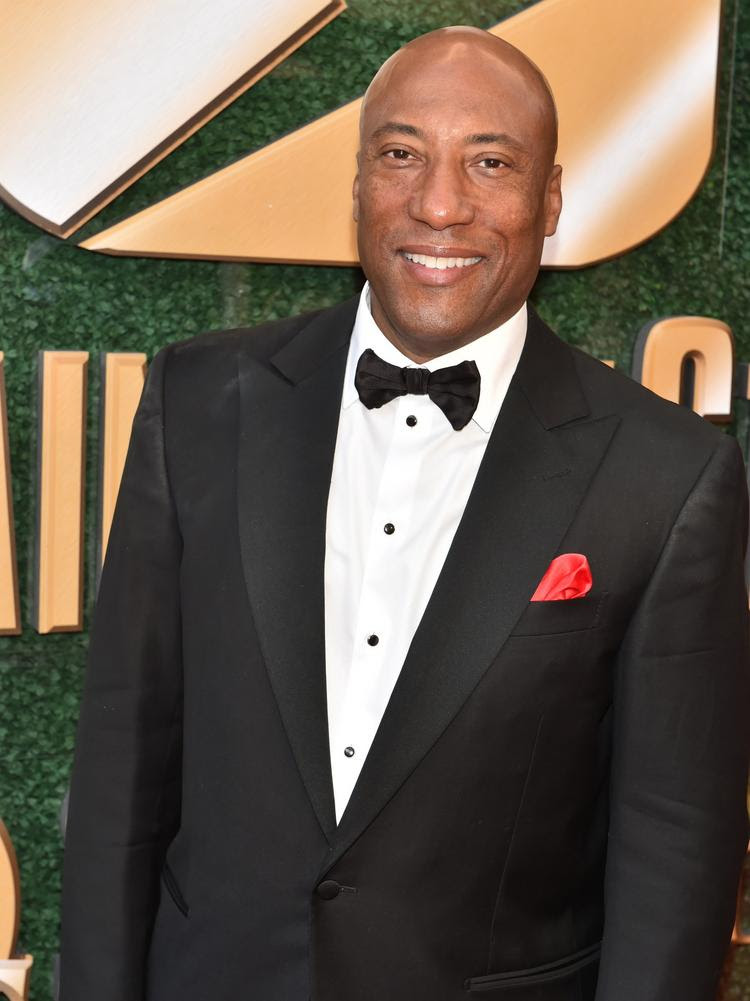 ‘”Allen Media Broadcasting, a division of Byron Allen’s Allen Media Group, is acquiring Honolulu ABC affiliate KITV from SJL Broadcasting for $30 million and plans to spend another $10 billion over the next two years to buy more network affiliates in the United States,” Janis L. Magin reported Aug. 17 for Pacific Business News.
‘”Allen Media Broadcasting, a division of Byron Allen’s Allen Media Group, is acquiring Honolulu ABC affiliate KITV from SJL Broadcasting for $30 million and plans to spend another $10 billion over the next two years to buy more network affiliates in the United States,” Janis L. Magin reported Aug. 17 for Pacific Business News.
The acquisition “brings the number of major network stations owned and/or operated by Allen Media Broadcasting to 16 in 12 U.S. markets. . . .”
Allen (pictured) is making strides in an ownership field dominated by white men, although competition from newer technologies has somewhat diminished the appeal of broadcast stations. The Federal Communications Commission reported in February that “Black or African Americans held a discernible majority voting interest in 12 stations (0.9%) in 2017 and 12 stations (0.9%) in 2015.” [PDF]
Allen’s company owns the Weather Channel and The Grio website. “Over the past year we’ve invested over $500 million to acquire best-in-class, top-tier, broadcast network affiliates,” Allen, founder, chairman and CEO of Allen Media Group, said in a statement. “We plan to invest approximately $10 billion to acquire more ABC, CBS, NBC, and FOX television stations over the next two years with the goal of being the largest broadcast television group in America.”
Magin also reported, “In February, Allen paid $305 million to acquire 11 broadcast television stations from USA Television Holdings and USA Television MidAmerica Holdings. A year ago he personally partnered with Sinclair Broadcast Group to acquire 21 regional sports networks from Walt Disney/Fox for $10.6 billion. . . .”
- Robert Marich, Los Angeles Business Journal: Byron Allen’s Entertainment Studios Is Hungry for More Acquisitions (Aug 17)
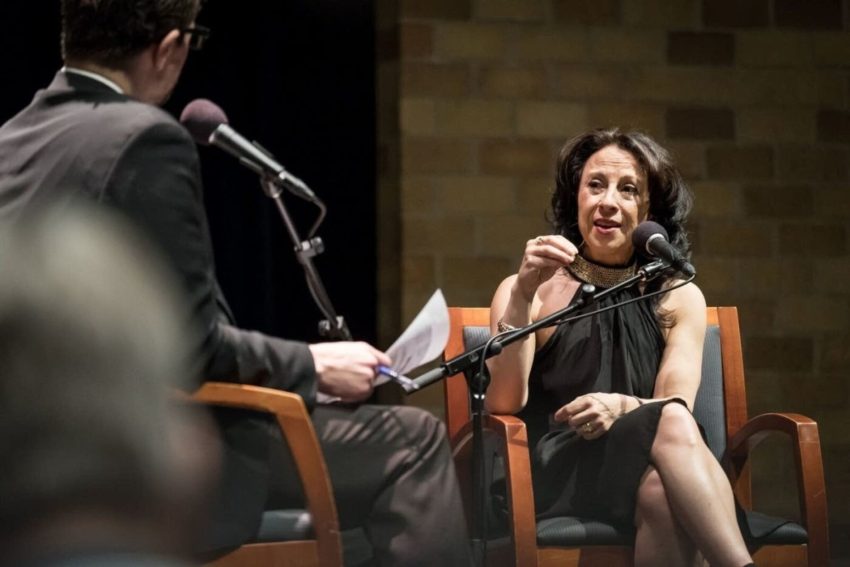
Staffers: Public Radio Panders to Whites
“Over the past six months, I interviewed 70 people of color who have worked at on or more of National Public Radio’s member stations,” Laura Garbes wrote Aug. 18 for American Prospect.
“Some preferred to remain anonymous out of concern for their relationships with present or future employers in the industry. After over 120 hours of conversation about how racism manifests in their workplaces, it is abundantly clear that in the creation of local programming, the prioritization of the public radio network’s core audience remains alive and well at NPR member stations.
“As one employee from a local affiliate told me, ‘whenever we do public-facing, marketing things, it’s very much signaling to a college-educated, middle- to upper-class white audience.’ This orientation reverberated as a common theme across employees across local member stations.
“How does framing stories for this audience shape how public radio stations tell stories? At every stage of story production — from the reporter’s ‘pitch’ to their editor, through the process of reporting, editing, and airing — powerful figures within the newsroom invoke ‘the audience’ and effectively restrict stories that challenge prevailing notions of racial progress. . . .”
Garbes also wrote, “Over half of my interview sample gave examples of concrete resistance they encountered when proposing stories that made white people feel uncentered or uncomfortable. When producers and reporters pitch stories for air, if ‘the audience’ won’t like or understand it, the pitch is typically a nonstarter.
” ‘The audience’ is invoked vaguely, but when named it is always white and middle-aged or older. This demographic also reflects the bulk of public radio’s news editors and station managers across the country. Employees who do not keep this core audience in mind often hear that the ideas they pitch do not match the tone the station wishes to set. Editors have told their direct reports to consider an audience listening on the way to work or with their kids in the car. What about a woman listening in the suburbs? Will she understand or relate to the story? . . .”
- Andrew Ramsammy, Greater Public: Leadership for the Now Generation (Aug. 12)
Gregory Cheadle describes the hypocrisy he sees in opposition to kneeling at games to protest police brutality. (Credit: Redding Record, Calif.)
How Trump’s ‘African American’ Bolted
You won’t find Gregory Cheadle, the man Donald Trump once singled out at a rally as “my African American,” at this week’s Republican National Convention. That’s because Cheadle became fed up with a president who carried what Cheadle had come to see as “white superiority complex.”
Breaking the story of the real-estate man’s defection from the GOP was cited last week as an example of the tenacity of PBS White House correspondent Yamiche Alcindor’s “rise to the top.”
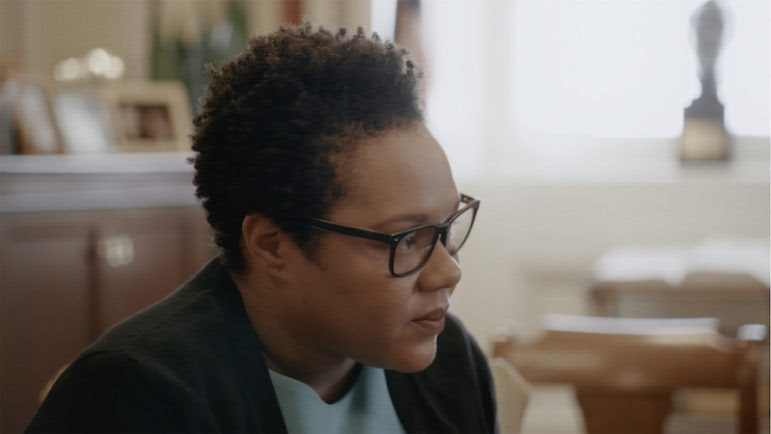 “The story was peppered with poignant quotes,” Julian Wyllie wrote Wednesday for Current in a profile of Alcindor (pictured, shown in the movie “The Fourth Estate”). “ ‘President Trump is a rich guy who is mired in white privilege to the extreme,’ Cheadle told Alcindor. ‘Republicans are too sheepish to call him out on anything, and they are afraid of losing their positions and losing any power themselves.’
“The story was peppered with poignant quotes,” Julian Wyllie wrote Wednesday for Current in a profile of Alcindor (pictured, shown in the movie “The Fourth Estate”). “ ‘President Trump is a rich guy who is mired in white privilege to the extreme,’ Cheadle told Alcindor. ‘Republicans are too sheepish to call him out on anything, and they are afraid of losing their positions and losing any power themselves.’
“Alcindor, who joined NewsHour in 2018, sees the report as an achievement in source development. ‘It took me three years to break that story because I had to check in with him about every couple months, every couple weeks to kind of get his idea of what he thought about the party,’ she told Current. At one point, he said he was willing to leave the party, ‘and you’re the person sticking with me, talking to me for the last three years, so I’d be happy to give this story to you.’
“The Cheadle scoop was part of a package of six reports that earned Alcindor this year’s White House Correspondents’ Association’s Aldo Beckman Award, presented annually to a journalist who demonstrates ‘overall excellence.’
“The win is historic,” Wyllie wrote. “Alcindor is the first public media reporter and first Black woman to win the award since the WHCA created it in the early 1980s. When announcing the honor, judges said Alcindor ‘is serious, incisive and — though she has a quiet demeanor — tough as nails.’ It’s a description she agrees with. . . .”
The profile also includes anecdotes about Alcindor’s interactions with the late “NewsHour” anchor Gwen Ifill and lawyer Benjamin Crump.
- Stephanie Ebbert, Boston Globe: Safe in Suburbia? Here’s what Trump’s ‘housewives’ are actually worried about (Aug. 14)
- Nolan D. McCaskill, Politico: ‘It was great’: In leaked audio, Trump hailed low Black turnout in 2016
- Bruce C.T. Wright, NewsOne: Will Candace Owens Speak At The RNC? List Of Sunken Black Folks Who Republicans May Invite
The Democratic party ticket of Joe Biden and Kamala Harris in their first television interview since their formal nomination, speaking with David Muir and Robin Roberts of ABC News.
Muir Presses Harris on Debate Exchange
“Kudos to ABC News’ David Muir and Robin Roberts for their interview with Joe Biden and Kamala Harris (pictured below, by Jason Miccolo Johnson), Tom Jones wrote Monday for the Poynter Institute.
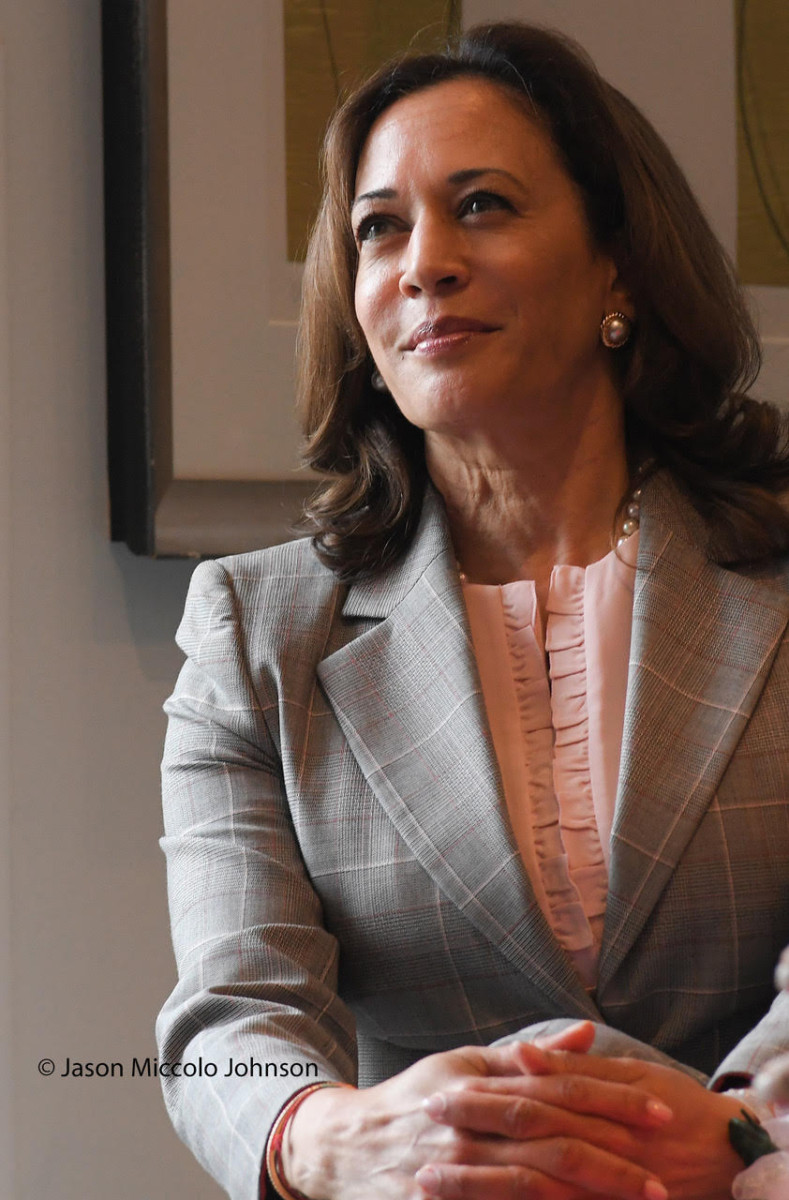 “The interview, which aired Sunday night on ABC, was Biden and Harris’ first joint TV interview. Muir and Roberts didn’t hold back. They pressed the two on their disagreements during the Democratic presidential debates, Biden’s fitness for office and Harris’ voting record. . . .”
“The interview, which aired Sunday night on ABC, was Biden and Harris’ first joint TV interview. Muir and Roberts didn’t hold back. They pressed the two on their disagreements during the Democratic presidential debates, Biden’s fitness for office and Harris’ voting record. . . .”
From the transcript:
MUIR: “Let me ask you both about a moment that people love to make a lot of. I have no interest in going back and looking at all the debates. Instead, though, I’d like to talk about the words on stage when the two of you were rivals. You remember that moment, Senator Harris, you were on stage talking about being a little girl who was being bussed, and you said of the vice president’s words about working with segregationist senators that they were hurtful and personal.
“I think the American people want to know that these aren’t debate moments, these aren’t political points, that when you say they were hurtful and personal — you mean that. And so I’m curious what the vice president has said to you since then that made you think, OK, I’m OK with this, I can join this ticket.”
HARRIS: “What is hurtful to me is that black families own one-tenth of the wealth of white families. What is hurtful to me is that blacks and Latinos are twice as likely to die from COVID as white families. What is hurtful to me is that when you look at the disparities, and everything from health care to education, to the economic well-being of families in America, there are real racial disparities that are rooted in systemic racism. And — and — and a failure to address the truths that may be difficult truths.
“Joe Biden does that. And he is doing that. He is addressing these truths. He speaks these truths. And one of the reasons I’m so excited to be on this ticket with him and God willing to serve with him is that he has the confidence of character, and a real genuine commitment to address these issues.
“And so he has policies before I was on the ticket that are about addressing racial disparities in the economy. Let’s talk about that. Around an investment in families to help them with homeownership. He has a whole plan before I was on the ticket to address HBCUs. I’m a proud graduate of Howard University. That is particularly very exciting. He has a plan that is about addressing the desperate need for reform of our criminal justice system.
“And that’s what this has to be about, which is translating the pain that [we] collectively should feel “as a country and I think we do collectively feel when I looked at who was marching in the streets and translate that into action that is about fixing the problems and that’s Joe Biden’s approach. And that’s why I’m so excited to be on this ticket with him. . . .”
- Acee Agoyo, indianz.com: ‘She was not good for Indian Country’: Kamala Harris back in spotlight as Democratic vice presidential pick (Aug. 11)
- James E. Garcia, Latino Rebels: A Latino Recap of the Democratic National Convention
- Stephanie Guerilus, The Grio: Charlotta Bass was first Black woman to run for VP
- Scaachi Koul, BuzzFeed News: Dinesh D’Souza’s Attacks On Kamala Harris Are Part Of A Bigger Problem In The Indian Community
- Rebecca Morin, USA Today: Prominent Latinos criticize Democrats for lack of representation at DNC (Aug. 17)
- Elizabeth S. Roldán, Latino Rebels: Kamala and Latinos (OPINION)
- Sanjena Sathian, Washington Post: Indian Americans want to claim Kamala Harris as ours. It’s a trap. (Aug. 14)
- Eugene Scott with Brooke Gladstone, “On the Media,” WNYC-FM: Is the Press Better at Calling Out Birther Lies? (podcast)
- Manisha Sinha, New York Times: Why Kamala Harris Matters to Me
- Mark Joseph Stern with Brooke Gladstone, “On the Media,” WNYC-FM: The ‘Think Tank’ Behind the Kamala Harris Birther Lie (podcast)
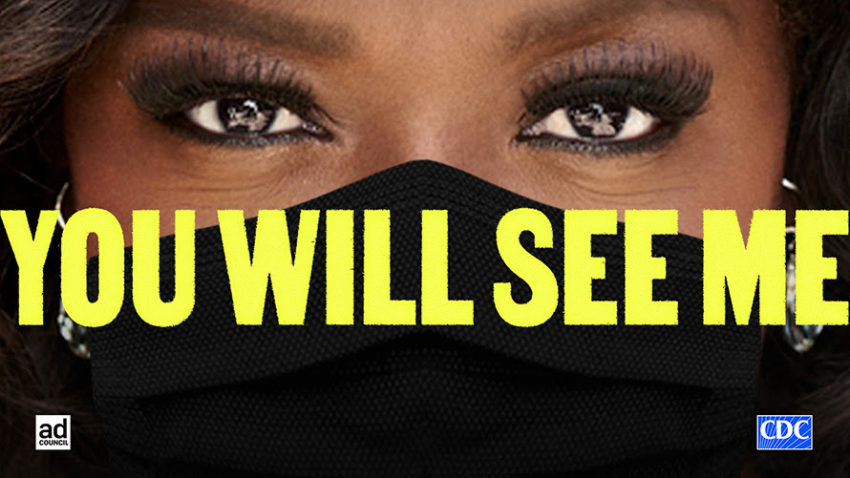
Toll on People of Color Is Actually Worse
“New data shows deaths from all causes — COVID and otherwise — have gone up 9 percent among White Americans, but more than 30 percent in communities of color,” Anna Flagg, Damini Sharma, Larry Fenn, Mike Stobbe and Marshall Ritzel reported Friday for the Marshall Project and the Associated Press.
“As many as 215,000 more people than usual died in the U.S. during the first seven months of 2020, suggesting that the number of lives lost to the coronavirus is significantly higher than the official toll. And half the dead were people of color — Blacks, Hispanics, Native Americans and, to a marked degree unrecognized until now, Asian Americans.
“The new figures from the Centers for Disease Control and Prevention highlight a stark disparity: Deaths among people of color during the crisis have risen far more than they have among Whites.
“As of the end of July, the official death toll in the U.S. from COVID-19 was about 150,000. It has since grown to over 170,000.
“But public health authorities have long known that some coronavirus deaths, especially early on, were mistakenly attributed to other causes, and that the crisis may have led indirectly to the loss of many other lives by preventing or discouraging people with other serious ailments from seeking treatment. . . .”
- Sari Boren, journalistsresource.org: Reasons health care journalists should interview nurses more than they do (Aug. 13)
- Waveney Ann Moore, Poynter Institute: How Black churches have adapted to the coronavirus
- Deanna Pan, Boston Globe: Why should we trust you?’ Black Americans, hardest hit by COVID-19, are the most skeptical of potential vaccines (Aug. 18)
- Christopher Torchia, Associated Press: Pandemic’s Toll Among Journalists in Peru Is Especially High
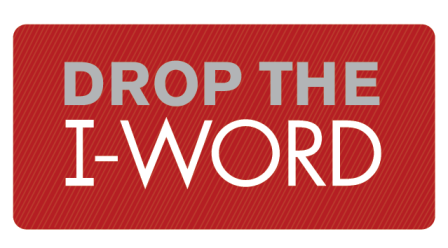
Spanish Media Still Using ‘Illegal’
A study published Tuesday in U.S. Spanish-language media found that the term “illegal immigrant” appears in 358 articles published in 26 publications since 2017, Diego Jesús Bartesaghi Mena reported for Latino Rebels.
“ ‘To me, what surprised me the most was to find that, in some publications, journalists still use the word “illegal” when referring to ‘immigrants,’ Ronny Rojas Hidalgo, investigative journalist and associate professor of journalism at the Craig Newmark Graduate School of Journalism-CUNY, told Latino Rebels about the study, which was published by the Latino Media Initiative at the Center for Community Media (CCM). . . .
“The CCM study analyzed 41 Spanish-language outlets in 15 states and Puerto Rico, accounting for more than 667,247 articles from 2017 until the start of 2020.
“ ‘Many local publications do not have resources to cover these stories, and most of them use outside publications that include terms such as “immigrants” or “illegal immigrants” to cover these stories,’ Rojas added.
“In 2013, The Associated Press dropped the term ‘illegal immigrant.’ In 2019, Univision Noticias apologized for using the term in a Spanish-language news stream, even though the term was being used in other stories on the outlet’s site. . . .”
- Center for Community Media: New Research Finds Eye-Opening Gaps in Latino Media News Coverage (Aug. 18)
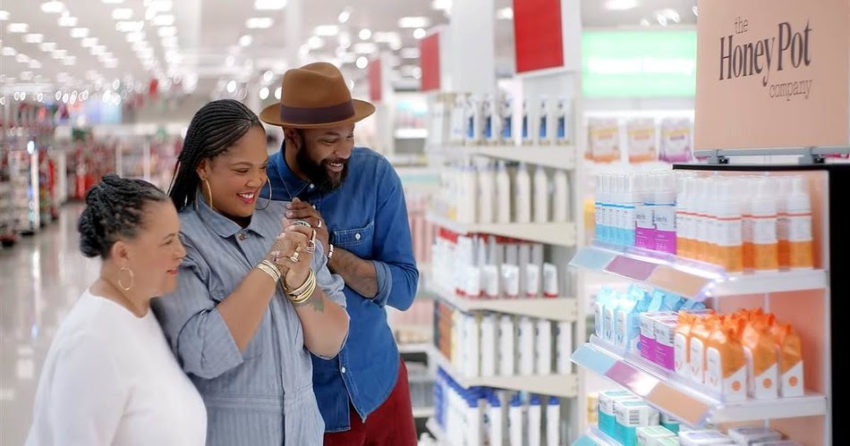
Ads With Diversity More Successful
For three years, a Journal-isms column headlined “Too Many African Americans in TV Ads?” has made the rounds on certain message boards and attracted comments directed there and to this site declaring that the answer is “yes.”
The commenters are not likely to be happy with a report last week from VAB, an advertising industry group specializing in video.
“VAB’s Do The Right Thing: How Diversity & Inclusion Drives Brand Outcomes finds a significant correlation between advertising that includes messages tied to diversity and inclusiveness and business success,” a news release began Thursday.
“The findings are the result of VAB’s analysis of hundreds of advertising campaigns and 3,300 commercials from 50 brands across multiple categories spanning the last five years. More than 20 diversity and inclusion campaign case studies from Johnnie Walker, Nike, Target, ThirdLove, Ulta Beauty, and other brands are included. . . .”
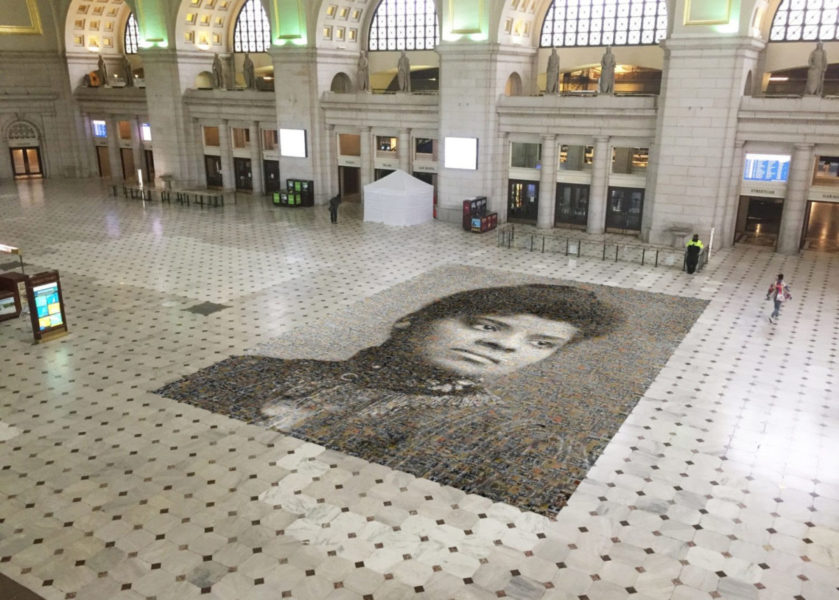
An artist’s rendering of the Ida B. Wells portrait in Washington’s Union Station. The portrait went on display Monday and is to remain until Saturday. (Credit: Women’s Suffrage Centennial Commission) Story
Suffrage Push Wasn’t Just White Women
“While our collective memory of the suffrage movement is often a vision of a small band of white women — fighting the establishment alone, marching and picketing in their flowy white dresses — the story of the women’s movement was more complicated and nuanced than that,” Angela P. Dodson wrote Aug. 18 for The Undefeated.
“It involved many women, but also men, of different races who had to find their voice, identify allies and build coalitions.
“As the centennial of the 19th Amendment’s certification on Aug. 26, 1920, approaches, many African Americans have questioned whether the suffrage movement is relevant to them, because most Black people in the South were disenfranchised anyway. For many African Americans, the movement’s reputation for discriminating against or dismissing Black suffragists and the long history of discord between white and Black feminists do not inspire enthusiasm for the anniversary celebration.
“As we approach the centennial and the first presidential election with a Black/Asian woman in the race, the first woman of color on a major political party’s ticket, we should examine how we got the vote and at what cost.
“To dismiss the suffrage movement as irrelevant dishonors the many Black women and men who participated — lobbying, debating, lecturing, petitioning, editorializing, parading and picketing alongside white suffragists.
“As women are gaining greater leverage in the political system, now is the time to study and credit the contributions of all suffragists and expand our knowledge of the entire movement.
“In many ways, the history of the women’s suffrage movement is inseparable from the history of race in the United States, as it is from so many issues. Indeed, the women’s rights movement was rooted in the anti-slavery movement, and African Americans were involved from the start. . . .”
- Ko Bragg, The 19th: ‘A history of great glory’: The consequential, evolving role of Black sororities in suffrage
- Michelle Duster, Time: I’m Ida B. Wells’s Great-Granddaughter, and I’m Still Fighting Her Fight for the Vote
- Jennifer Medina, New York Times: Overlooked No More: Jovita Idár, Who Promoted Rights of Mexican-Americans and Women (Aug. 7, updated Aug. 19)
Short Takes
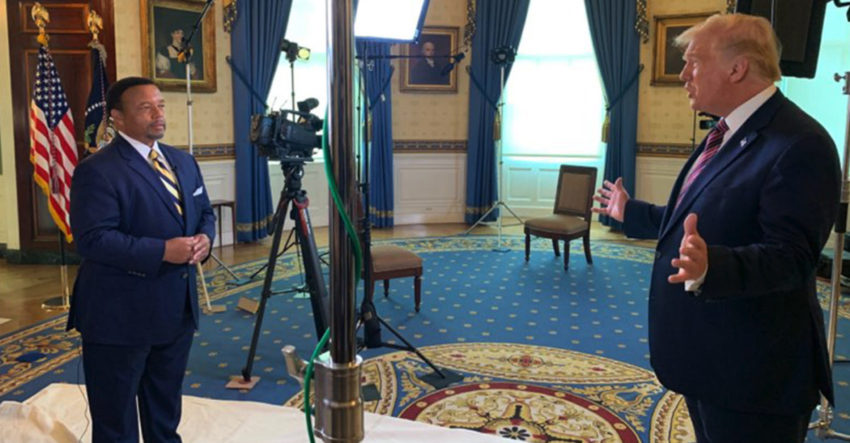
- Kelly Wright, a former anchor for Fox News now anchoring at the Black News Channel, interviewed President Trump last week in Trump’s initial interview with any African American-owned media, Stacy M. Brown reported Sunday for the National Newspaper Publishers Association. NNPA, “the trade association of 230 Black-owned newspapers and media companies that comprise the Black Press of America, has repeatedly requested interviews with the president throughout his nearly four years in office.” In the session with Wright, Trump repeated familiar talking points. “Kelly had been working on getting an interview for a while. As with other journalists who have done interviews with the President, his request was approved and the interview was done,” BNC spokesman Tommy Ross messaged Journal-isms Monday.
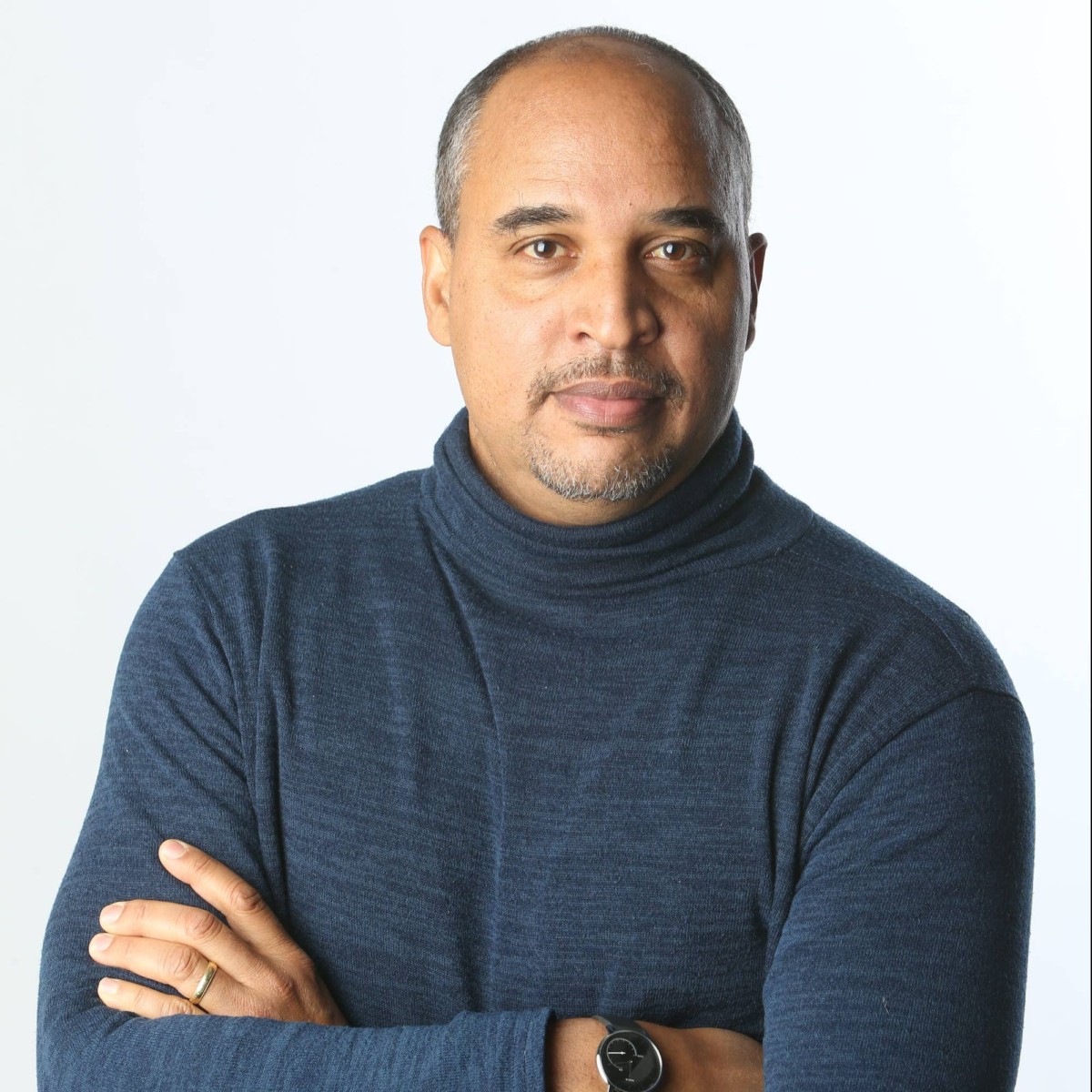 New York Times writer Kurt Streeter (pictured) has been tapped to take over the “Sports of the Times” column, the first Black journalist to have such a column since William Rhoden left the paper in 2016. “This is not Kurt’s first turn as a columnist,” Sports Editor Randy Archibold told staffers Friday, “When he was an editor at The Los Angeles Times, Dean Baquet asked Kurt, then a standout Metro reporter, about writing one for Sports, which he did for a few years. He later joined ESPN The Magazine, producing highly acclaimed work there, too. . . .”
New York Times writer Kurt Streeter (pictured) has been tapped to take over the “Sports of the Times” column, the first Black journalist to have such a column since William Rhoden left the paper in 2016. “This is not Kurt’s first turn as a columnist,” Sports Editor Randy Archibold told staffers Friday, “When he was an editor at The Los Angeles Times, Dean Baquet asked Kurt, then a standout Metro reporter, about writing one for Sports, which he did for a few years. He later joined ESPN The Magazine, producing highly acclaimed work there, too. . . .”
- Only 23 percent of U.S. adults “who self-identify as Hispanic or Latino have heard of the term Latinx, and just 3% say they use it to describe themselves, according to a nationally representative, bilingual survey of U.S. Hispanic adults conducted in December 2019 by Pew Research Center,” Luis Noe-Bustamante, Lauren Mora and Mark Hugo Lopez reported Aug. 11 for the center. Elsewhere, writer César Vargas scolded, “Stop being so pedantic with language if it isn’t affecting you physically, materially, spiritually. Not long ago you didn’t even want people calling you Latino.”
- At least 10 journalists who cover environmental issues have been killed in the past five years, while more than 50 press freedom violations linked to environment journalism have been registered during the same period, Reporters Without Borders said Friday. “This is a bad time for environmental journalism, with abuses against its practitioners becoming increasingly frequent. . . .”
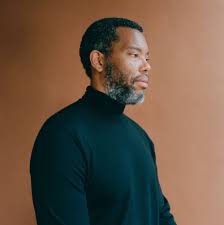 Ta-Nehisi Coates (pictured) has guest-edited the September issue of Vanity Fair, “The Great Fire.” “Ta-Nehisi traveled to Louisville to report the story of Breonna Taylor as only a mother could tell it. LaToya Ruby Frazier photographed Taylor’s family, her boyfriend holding the engagement ring he was never able to propose with. Ava DuVernay spoke with the eternally prescient Angela Davis, and Deana Lawson made Davis’s portrait. Jesmyn Ward’s story arrived quietly in our inboxes and broke our hearts,” editor Radhika Jones wrote.
Ta-Nehisi Coates (pictured) has guest-edited the September issue of Vanity Fair, “The Great Fire.” “Ta-Nehisi traveled to Louisville to report the story of Breonna Taylor as only a mother could tell it. LaToya Ruby Frazier photographed Taylor’s family, her boyfriend holding the engagement ring he was never able to propose with. Ava DuVernay spoke with the eternally prescient Angela Davis, and Deana Lawson made Davis’s portrait. Jesmyn Ward’s story arrived quietly in our inboxes and broke our hearts,” editor Radhika Jones wrote.
- “A U.S. judge granted a preliminary injunction on Thursday against federal officers, exempting journalists and legal observers from orders to disperse after the officers declare riots at Portland protests,” Kanishka Singh reported for Reuters. “The 61-page order prohibited federal officers from seizing any ‘photographic equipment, audio- or video recording equipment, or press passes’ from reporters and legal observers. A lawyer from the U.S. Justice Department had argued that the press does not hold any special right when police declare an unlawful assembly or riot and order crowds to break up. . . . “
- “Journalists and photographers griped at a public hearing on Tuesday that the New York Police Department has harassed them and blocked them from doing their jobs amid the pandemic and protests over the killing of George Floyd,” Keith J. Kelly reported Aug. 18 for the New York Post. “At a heated, two-hour web hearing conducted by the NYPD over the department’s proposals to tighten its rules governing the suspension and revoking of press credentials, journalists raised hackles over the treatment they’ve gotten from cops. . . .”
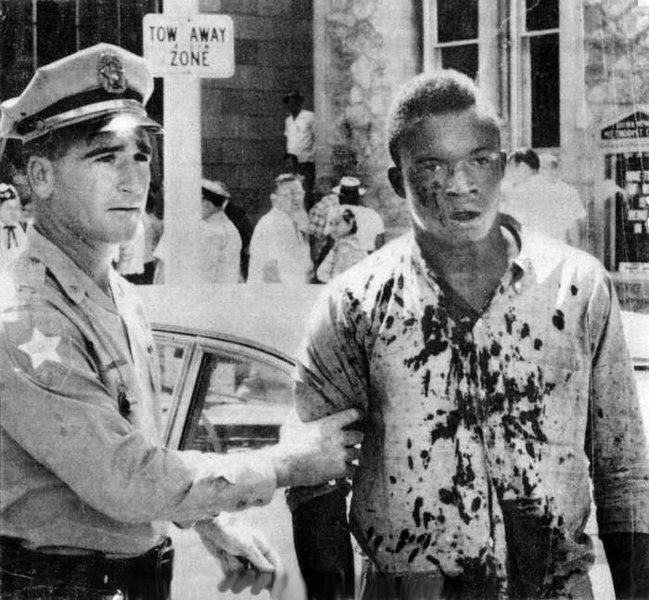
- On Saturday, Aug. 27, 1960, “as young Black people staged sit-ins in the W.T. Grant department lunch counter near Hemming Park, a band of white racists attacked them, some armed with clubs made from ax handles,” the Florida Times-Union in Jacksonville editorialized Friday, updated Monday. “. . . Yet, 60 years ago, management at The Florida Times-Union didn’t cover the historic incident later known as Ax Handle Saturday in any depth. Because of this bad decision, newspaper readers elsewhere in the nation had more information on the sit-ins than readers of Jacksonville’s premier newspaper. . . . The Florida Times-Union committed an act of journalistic malpractice so egregious that it deserves a formal apology. . . .”
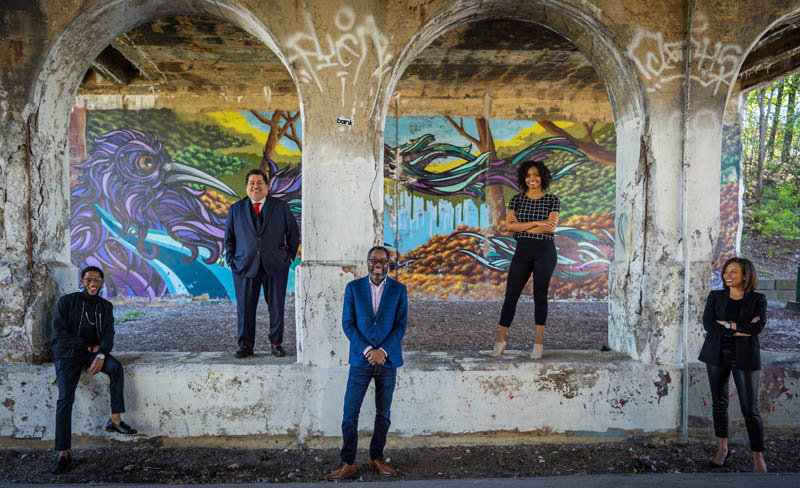
- Its journalism funded by foundation grants, “BridgeDetroit aims to personally engage with Detroiters through community groups, polling, focus groups and more,” Evelyn Mateos wrote Aug. 7 in an update for Editor and Publisher. Veteran journalist Stephen Henderson, project executive and executive editor, said, “It is convened around the idea that Detroiters themselves know best about the issues that challenge their lives, the issues that make their lives more difficult or even issues that make their lives better.”
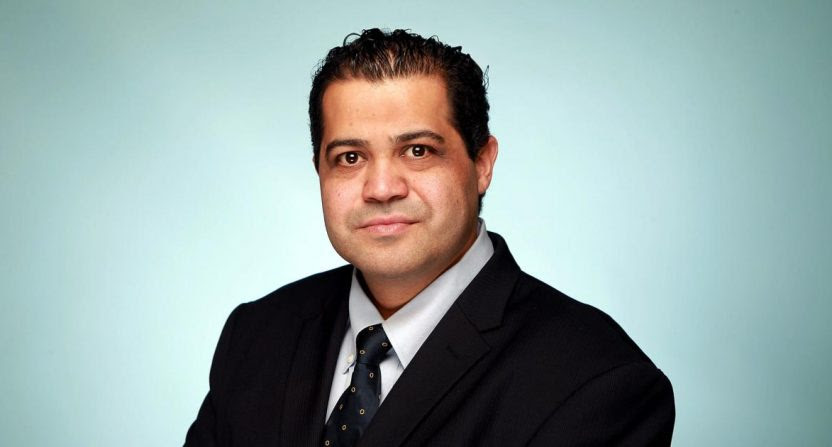 “Los Angeles Times sports columnist Arash Markazi resigned following a month-long internal investigation into accusations of plagiarism and ethical impropriety,” J. Clara Chan reported Aug. 14, updated Aug. 15, for The Wrap. “We have updated certain stories to include the appropriate attribution or clarification, as needed,” a Times spokesperson told The Wrap. “Consistent with company policy, The Times declines further comment on this personnel matter.”
“Los Angeles Times sports columnist Arash Markazi resigned following a month-long internal investigation into accusations of plagiarism and ethical impropriety,” J. Clara Chan reported Aug. 14, updated Aug. 15, for The Wrap. “We have updated certain stories to include the appropriate attribution or clarification, as needed,” a Times spokesperson told The Wrap. “Consistent with company policy, The Times declines further comment on this personnel matter.”
- “The Pittsburgh Post-Gazette this week claimed a discrimination inquiry by the city’s Commission on Human Relations — opened in June after a Black reporter accused the newspaper of violating her civil rights — is unconstitutional,” Megan Guza reported Wednesday for the Pittsburgh Tribune-Review. Guza also wrote, “The commission filed the complaint June 9 following a firestorm brought on by the newspaper barring reporter Alexis Johnson from covering Black Lives Matter protests. Her May 31 social media post that sparked the situation said: ‘Horrifying scenes and aftermath from selfish LOOTERS who don’t care about this city!!! … oh wait sorry. No these are pictures from a Kenny Chesney concert tailgate. Whoops.’ . . ”
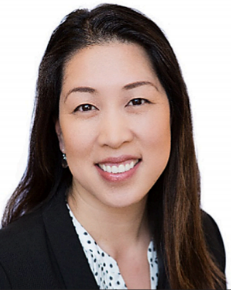 “ABC-owned KABC-TV (‘ABC7’) has named Pam Chen (pictured) to serve as the station’s vice president and news director,” Michael Schneider reported Wednesday for Variety. “The move makes Chen the first Asian American news department head at a network-owned station in Los Angeles. . . . As assistant news director, Chen launched a community journalist program at the station and led the news organization to three regional Edward R. Murrow Awards by the Radio Television Digital News Association for news coverage. . . .”
“ABC-owned KABC-TV (‘ABC7’) has named Pam Chen (pictured) to serve as the station’s vice president and news director,” Michael Schneider reported Wednesday for Variety. “The move makes Chen the first Asian American news department head at a network-owned station in Los Angeles. . . . As assistant news director, Chen launched a community journalist program at the station and led the news organization to three regional Edward R. Murrow Awards by the Radio Television Digital News Association for news coverage. . . .”
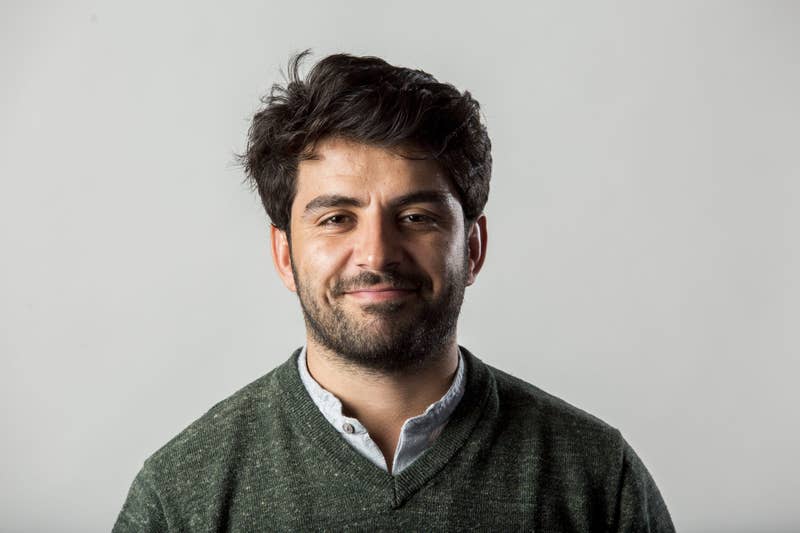 Mujib Mashal (pictured), “a fearless reporter with a poet’s flair,” will be The New York Times’ next South Asia correspondent, based in Delhi, India, the Times announced Wednesday. Mashal “has been the heart and soul of our Afghanistan coverage for the past five years. . . .”
Mujib Mashal (pictured), “a fearless reporter with a poet’s flair,” will be The New York Times’ next South Asia correspondent, based in Delhi, India, the Times announced Wednesday. Mashal “has been the heart and soul of our Afghanistan coverage for the past five years. . . .”
- “For the past five years, Jazmine Hughes has been an innovative editor at The New York Times Magazine, helping to launch Mag Labs, re-imagining the Talk column and playing a major role in the success of the annual The Lives They Lived issue,” the Times announced Aug. 12. A memo also said, “Jazmine is taking on a new role where she’ll be writing full time, both for the Magazine and for Metro. She’ll begin with a six-month stint as a reporter on Metro. . . .”
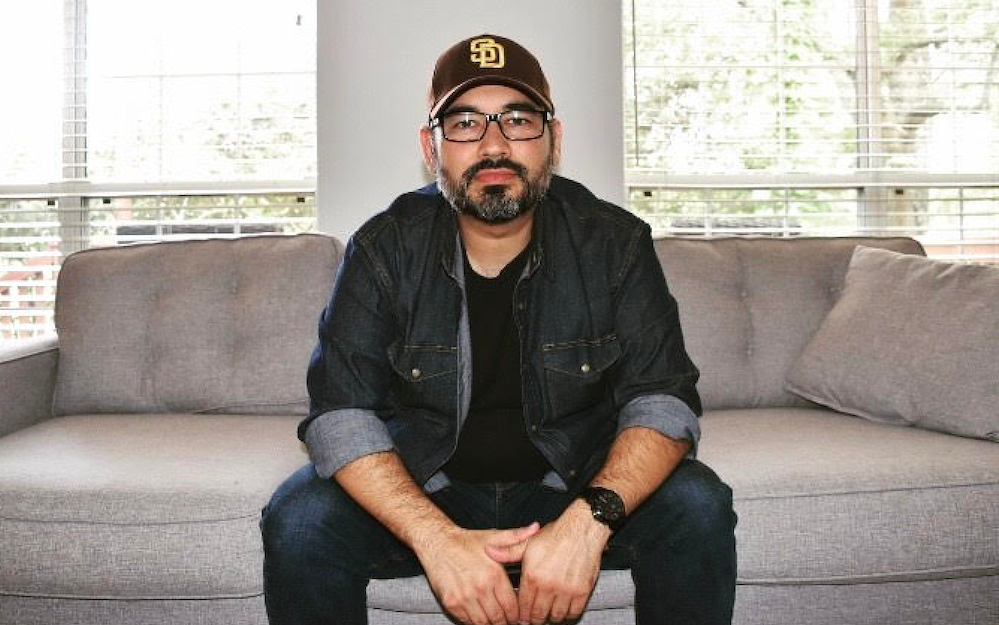 “Jaime Cárdenas (pictured) has started a new and expanded role as social media strategist for Gannett Local News,” Veronica Villafañe reported Aug. 17 for her Media Moves site. She also wrote, “In his new role, Cárdenas will help Gannett newsrooms across the country develop strategies to grow digital subscriptions and foster loyalty with readers, deemed especially important heading into the 2020 Elections. He’ll also be providing audience social media analytics and lead initiatives to identify new and creative ways to distribute the news on social media. . . .”
“Jaime Cárdenas (pictured) has started a new and expanded role as social media strategist for Gannett Local News,” Veronica Villafañe reported Aug. 17 for her Media Moves site. She also wrote, “In his new role, Cárdenas will help Gannett newsrooms across the country develop strategies to grow digital subscriptions and foster loyalty with readers, deemed especially important heading into the 2020 Elections. He’ll also be providing audience social media analytics and lead initiatives to identify new and creative ways to distribute the news on social media. . . .”
- “The rumors have been floating around for a while now, but ESPN made it official on Monday,” (scroll down) Tom Jones reported Aug. 18 for the Poynter Institute. “Steve Levy, Brian Griese and Louis Riddick have been named the announcing team for ‘Monday Night Football.’ They replace the highly criticized team of Joe Tessitore and Booger McFarland. . . .”
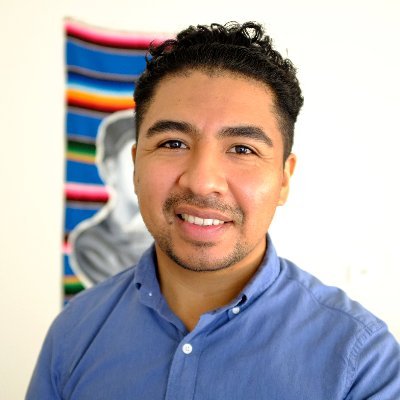 Lucio Villa (pictured) has been promoted to the role of design editor at The Washington Post, the newspaper announced Monday. “Lucio joined us a year ago from the San Francisco Chronicle and has impressed us with his ability to elevate projects, his unflappable demeanor and his imaginative approaches on such projects as the Mekong River, and Virus Global Wave, and as a part of the team that built the Mueller Report Illustrated. . . . Outside of work, he is a board member of the [National Association of Hispanic Journalists] D.C. chapter and was one of the NAHJ curriculum co-chairs for the NABJ/NAHJ 2020 virtual conference. . . .”
Lucio Villa (pictured) has been promoted to the role of design editor at The Washington Post, the newspaper announced Monday. “Lucio joined us a year ago from the San Francisco Chronicle and has impressed us with his ability to elevate projects, his unflappable demeanor and his imaginative approaches on such projects as the Mekong River, and Virus Global Wave, and as a part of the team that built the Mueller Report Illustrated. . . . Outside of work, he is a board member of the [National Association of Hispanic Journalists] D.C. chapter and was one of the NAHJ curriculum co-chairs for the NABJ/NAHJ 2020 virtual conference. . . .”
- “Cynthia D’Aprix Sweeney, author of The Nest, will fund fellowships for two Black students, selected from six [historically] Black colleges and universities, to attend the Columbia Publishing Course,” Publishers Weekly reported Aug. 18. “The full name of the fellowship is the D’Aprix Sweeney Family Fellowship, and it will be funded for five years at a value of $100,000, giving a total of ten students $10,000 each. Daniel Halpern, president and publisher of Ecco, will administer the fellowship. Halpern, along with a changing roster of three Black writers, will choose recipients. . . .”
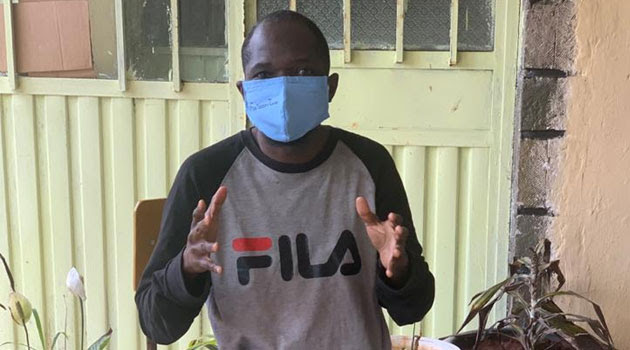
- “Kenyan journalist Collins Juma Osemo alias Yassin Juma has been freed in Ethiopia following the intervention by the Ministry of Foreign Affairs and the embassy in Addis Ababa,” Carolyne Tanui reported Thursday for Kenya’s CapitalFM. “The Foreign Office said the journalist who had been incarcerated despite two court orders directing his release has been transferred to a COVID-19 isolation facility having contracted the virus while in police custody. . . .” Juma wrote “Here is my story of injustice in Ethiopia” for the Daily Nation in Kenya on Aug 18.
- As part of a fascinating series unfolding on BBC Radio, actor Clarke Peters “looks at the music of black Europe at the time of the Second World War with recordings of Nazi propaganda jazz, underground bands in Hitler’s Germany, black American trumpet stars in occupied Paris, and Caribbean swing bands playing through the Blitz in London. He also examines the work of Nigerian composer Fela Sowande and plays extracts of his wartime broadcast for the BBC,” the BBC says.
- In Afghanistan and Pakistan, “with war fatigue, as most foreign news outlets and associated non-governmental organizations wrap up operations and the war-dependent economies of both countries collapse, AfPak journalists and their institutions are weakened and abandoned, at the mercy of powerful interest-groups, anti-transparency state and quasi-state actors and, most recently and disturbingly, patrons like China, Turkey and Saudi Arabia,” Wajahat S. Khan reported Wednesday for Columbia Journalism Review.
- “Just when it seemed like Facebook’s controversies might have peaked, the company now appears to be obstructing a genocide investigation, and it’s using U.S. law to do it,” Matthew Smith reported Aug 18 for Time. “The West African nation The Gambia is seeking to hold Myanmar accountable for charges of genocide against the Rohingya people, an ethnic and religious minority. . . . In 2018, Facebook acknowledged it was used to ‘foment division and incite offline violence’ in Myanmar, where the social media platform is so ubiquitous it’s often synonymous with the internet. . . .”
To subscribe at no cost, please send an email to journal-isms-subscribe@yahoogroups.com and say who you are.
Facebook users: “Like” “Richard Prince’s Journal-isms” on Facebook.
Follow Richard Prince on Twitter @princeeditor
Richard Prince’s Journal-isms originates from Washington. It began in print before most of us knew what the internet was, and it would like to be referred to as a “column.” Any views expressed in the column are those of the person or organization quoted and not those of any other entity. Send tips, comments and concerns to Richard Prince at journal-isms-owner@yahoogroups.com
View previous columns (after Feb. 13, 2016).
- Diversity’s Greatest Hits, 2018 (Jan. 4, 2019)
- Book Notes: Is Taking a Knee Really All That? (Dec. 20, 2018)
- Book Notes: Challenging ’45’ and Proudly Telling the Story (Dec. 18, 2018)
- Book Notes: Get Down With the Legends! (Dec. 11, 2018)
- Journalist Richard Prince w/Joe Madison (Sirius XM, April 18, 2018) (podcast)
- Richard Prince (journalist) (Wikipedia entry)
- February 2018 Podcast: Richard “Dick” Prince on the need for newsroom diversity (Gabriel Greschler, Student Press Law Center, Feb. 26, 2018)
- Diversity’s Greatest Hits, 2017 — Where Will They Take Us in the Year Ahead?
- Book Notes: Best Sellers, Uncovered Treasures, Overlooked History (Dec. 19, 2017)
- An advocate for diversity in the media is still pressing for representation, (Courtland Milloy, Washington Post, Nov. 28, 2017)
- Morgan Global Journalism Review: Journal-isms Journeys On (Aug. 31, 2017)
- Diversity’s Greatest Hits, 2016
- Book Notes: 16 Writers Dish About ‘Chelle,’ the First Lady
- Book Notes: From Coretta to Barack, and in Search of the Godfather
- Journal-isms’ Richard Prince Wants Your Ideas (FishbowlDC, Feb. 26, 2016)
- “JOURNAL-ISMS” IS LATEST TO BEAR BRUNT OF INDUSTRY’S ECONOMIC WOES (Feb. 19, 2016)
- Richard Prince with Charlayne Hunter-Gault,“PBS NewsHour,” “What stagnant diversity means for America’s newsrooms” (Dec. 15, 2015)
- Book Notes: Journalists Follow Their Passions
- Book Notes: Journalists Who Rocked Their World
- Book Notes: Hands Up! Read This!
- Book Notes: New Cosby Bio Looks Like a Best-Seller
- Journo-diversity advocate turns attention to Ezra Klein project (Erik Wemple, Washington Post, March 5, 2014)


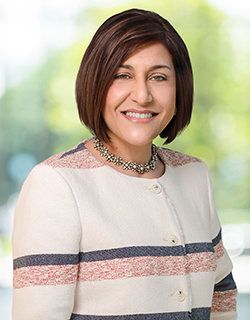 “
“